What will Russia do about Turkish-Ukrainian Double Impact?
The grand military-political knot, which was tied up on Russia’s south-east borders, from Middle East to Ukraine, is ready to have a bloody unleash by the means of Western provocations. The scenario of simultaneous strike on both fronts becomes more and more possible: UAF attacking Donbass, Transnistria or even Crimea along with the intervention of Turkey and Saudi Arabia in Syria. With the indirect support of NATO, Turkey has already started a military penetration on the north of Syria. At the same time, USA, France and other Western countries have given Ankara a green light by rejecting Russia’s resolution on prohibition of military intervention in Syria in the UN Security Council.
The estimation of Washington is simple: by pushing controllable regimes of Ankara and Kiev to military aggression in Syria and Donbass they intend to force Russia to face the necessity of war on two fronts, separated from each other by thousands of kilometres. As a result, Russia will have to either give in to the West by giving up all its positions and starting internal destructive processes, or get involved into large-scale ground operations, undermining its power. Meanwhile, NATO block itself and especially the USA officially remain uninvolved.
To what extent is this scenario possible and what are its options? How will Russia react in such a difficult situation and what is its feasible response? What is the optimal Moscow’s way of resolving the largest scale conflict since the Cold War?
We must specify that Russia plays black figures in this chess game. All the possible options of Moscow’s military actions, listed below, are solely the responses to foreign aggression within the areas of Russian interests. For its part, Russia has never taken any aggressive actions towards other sovereign states and legitimate governments, and does not take it now and will not take it in the future.
Scenarios of last resort: Scylla and Charybdis
There are many possibilities of resolving such complex multifactorial geopolitical processes, keeping in mind the big amount of players and mass of military, political and economic nuances, it is close to impossible to predict all of them. Thus, we should briefly describe only the most possible and the most impossible scenarios, show the alignment of forces in the regions and list the key points.
The perfect scenario for the West looks like this: Russian government, facing the necessity of more active military actions for simultaneous protection of Donbass (or even more Crimea and Transnistria – regions with large Russian population) and Syria, will decide that it is impossible and give up at least one side. Premature withdrawal from Syria under the pressure of Turkey, and especially giving up Donbass to Kiev will lead to a catastrophe of Russian foreign policy and to huge internal disappointment, which will launch the destructive political processes up to the beginning of the Colour Revolution. On the wave of double defeat anti-Kremlin forces sharply become more active, hoping for an abrupt weakening in the people’s support towards the authorities. One oppositionists will raise banners of “betrayed Novorossiya” and start patriotic Maidan, while others, with the support of Khodorkovsky, will try to direct dissatisfaction of people by dropping living standards towards the benefit of liberal reforms by promising consumer abundance in exchange of regime change.
Fortunately, Moscow cannot fail to be aware of such risk, and, knowing the principles and the will of Russian leader, we do not take this option into account, especially regarding the fact Russia will not have enough power for such actions.
Not so desirable, but quite acceptable for the West option is that Russia will react on military threat in Syria and Ukraine too directly and enter into full-scale ground combat operations in both regions. Even if NATO will not intervene directly, such contractions of Moscow lead to enormous costs and even victims. Even if the task of UAF’s defeat is quite solvable, besides taking into account their conscription waves, ground combat operation by itself will mean, in fact, full-scale war between Russia and Ukraine, which will have extremely negative consequences for the future common life of our peoples. As for Turkey, everything is much more complicated: it is understood that without direct strikes on its territory it will be quite difficult to defeat 10th in the world Turkish army in full-scale conflict. Meanwhile direct strikes will most likely motivate NATO’s block to enter the war, which causes a threat of beginning the third (and the last) world war. With the persistent prudence in the world politics the possibility of such outcome is low, but, unfortunately, its threat exists.
Middle Eastern theatre
Turkey’s and Saudi Arabia’s actions (most likely coordinated) could also develop in several scenarios. Following the already happening redeployment of terrorist groups, massive shelling of Syrian territory, occasional Special Forces incursions and construction of engineering structures in border areas of northern Syria, Ankara could worsen the situation, for instance:
by injecting limited contingent in northern areas of Iraq and Syria under the excuse of “fighting against terrorism”;
by starting to bomb not only Kurds, but also governmental Syrian forces together with Saudi Air Forces and under the cover of the USA coalition;
by starting full-scale ground combat operation on Syrian territory adjoin, in particular, with actions against the Syrian Armed Forces and Russian Aerospace Forces in Aleppo, as a response to Assad’s resistance;
by provoking a conflict between Armenia and Azerbaijan, which will put Moscow that has official alliance commitments to Yerevan in difficult situation.
In case of direct response from Russia and conflict with Turkey, logistic of supply will become the main problem for Russian armed forces in Syria. Ankara will immediately close channels for Russia and, if NATO will support it in one way or another, Gibraltar will be blocked for Russian boats as well. Suez Canal will become the only route to enter Mediterranean Sea. However, it has its own painful political aspect. Official Cairo today has a very good relationships with Moscow and is more than cold towards Ankara, but at the same time it is tightly connected to Saudi Arabia. It is impossible to predict with a hundred percent certainty how Egypt will behave in case of Russian-Turkish conflict, but complete neutrality is the most probable.
With a full closure of Suez Canal for Russia, taking into account that transporting cargoes around all Europe and Africa or around Asia is expensive and long, air route through Caspian Sea and further over territories of Iraq and Iran will become the main route of supply of Russian armed forces in Syria and Syrian allies. There is no doubt in Teheran’s collaboration, but how will react official Baghdad? For now, judging by how easy the opportunity to transport cargoes to Syria is offered, Baghdad’s sympathies are on Moscow’s side. This is caused by Teheran’s influence on Shiites government of Iraq as well as common interest in the fight against terrorism. Apart from that, after the intervention of the Turkish army on the territory of Iraq the relations between Baghdad and Ankara cannot be called warm ones. But Baghdad anyway is neither Damask nor Teheran; it is in fact balancing between Teheran and Washington. If the USA take in this conflict at least relatively neutral position, Baghdad will try to provide all possible assistance to Russia, Iran and Syria. But if the West openly opposes Russia, even only at “diplomatic front”, Iraq will have to do a very uneasy choice. It is impossible to be completely sure the choice will be in our profit. If it is not in our benefit, then the group of Russian Aerospace Forces will be isolated from the big land. In this case Moscow will only have to hope that Teheran at least solves the problems with Baghdad and at most enters full-scale war against Turkey.
Thus, there are two potential blocs being formed in the Middle East. On the one side there are Russia, Syria and Iran with non-guaranteed infrastructural support of Iraq. On the other side there are Turkey and Saudi Arabia with non-official support of terrorist groups and open support of NATO. Kurds take special place in this alignment of forces; they are actively fighting Islamic terrorism, regardless of not being a monolithic ethno-political force.
Turkey owns second in number armed forces within NATO: 410 thousands of personnel and 185 thousands of the nearest reserve. Besides, about 276 thousands of people are a part of Turkish Gendarmerie. It is impressive power. For comparison, the size of Russian Armed Forces is about 1 million personnels and about 200 thousand people in internal forces.
However, impressive size is the only thing at the disposal of Turkish Armed Forces. The major type of Turkish forces are land troops (391 thousand people), who’s armament leaves much to be desired. For example, Turkish land troops are reported to be armed with 3300 tanks. But 1200 of them are “M48” tanks designed almost 70 years ago. Turkey owns only about 340 modern “Leopard II”. Besides, the army disposes of about 400 “”Leopard I”, which are now being rapidly modernized. For comparison: tank arsenal of Russia amounts today up to 21-22 thousands units, about 13-14 thousands of them are modern or relatively modern models: “T-90”,”T-80” and “T-72”.
The situation with armoured vehicles and artillery is similar. Turkey has both of them in a lesser amount than Russia does. Both are mostly outdated models. Nevertheless, comparing armoured power it must be notified that Russia does not have land border with Turkey, thus cannot use its advantage in tanks, artillery and armoured vehicles. Syrian and possibly Iranian ground troops will give a cover to Russian planes and air defence systems.
Turkish air forces, looking respectably better than most of Middle Eastern neighbours’ ones, do not appear to be that serious in comparison with Russian Aerospace Forces. Turkey has no bombers. However it disposes about 200 pursuit planes F-16 and around 40 F-5, as well as certain amount of training and training-combat aircrafts. According to different estimates, Russian Aerospace Forces have from 1500 to 1800 fighter planes. Most of them are modern technology at the level of Su-30, Su-35, Su-34. Russian Aerospace Forces have at their disposal the bomber might, which is able to drastically weaken Turkish potential on the sea and on the land.
Turkish fleet is a thing that for some reason enthrals detractors of Russia. According to most of the sources, Turkey owns 16 frigates, 8 corvettes, 14 submarines. But as a part of the Black Sea Fleet alone, Russia has about 50 military boats. Of course, part of them is outdated. And indeed, Turkey has more frigates and twice as many submarines as Russian Black Sea fleet. However, first of all, missile cruiser "Moskva" is the flagship of Black Sea fleet; Turkey has nothing even remotely comparable to that ship at its disposal. Secondly, missile armament of Turkish boat is significantly weaker that the one of Russian boats. Thirdly, ships act in connection with aviation, and here Russia has an obvious advantage. Lastly, there is no point in comparing Black See Fleet alone with the entire Turkish fleet, since the latter acts not only in the Black Sea, but also in the Mediterranean Sea. In addition, Turkey has only two large bases on the Black Sea. Meanwhile Russia has three more fleets, each of them is approximately comparable in power to the entire Turkish fleet.
The most powerful potential ally of Turkey if Saudi Arabia; it has the most modern armed forces in the Middle East, which amounts around 1000 tanks of modern and relatively modern modifications, more than 1000 armoured vehicles, up to 300 fighter jets (predominantly modern or relatively modern models.
However, first of all, armed forces of Saudi Arabia are not especially numerous; they amount just about 140 thousand people. Secondly, Saudi Arabia military art is, to put it mildly, lame. For which month in a raw Riyadh is shamefully wasting its time in Yemen and cannot do anything against Huthis militia? After that, it is ridiculous to seriously count on a victory against real enemy.
Moreover, Iran, which is lately infuriated with the actions of its Wahhabi neighbours, can become direct and major opponent of Saudi Arabia in this conflict.
In addition, Iranian armed forces are the most numerous in the Middle East and count up to 545 thousands personnel and 350 thousand of reserve, plus the guard “Guardians of the Islamic Revolution”. Armament (1600 tanks, 300 fighter jets, 600 armoured vehicles) is mostly outdated, but is being actively modernized by means of own military-industrial complex.
By the way, talking about modern armament, Russia and its allies have the most powerful advantage, which are the air defence systems. Russian air defence system is considered the best in the world. Today it is covering the sky of Syria. Besides, Russian air defence complexes are exported to Iran. Meanwhile, Turkish air defence is so outdated that do not need to be taken into account. Ankara asks the USA and Germany to deploy their air defence systems in Turkey, but allies are not rushing to do that. To tell the truth, now the USA delivers modern complexes “Patriot” to Saudi Arabia, which is in case of conflict can bring trouble to Iranian Air Forces.
As for the military might of Syria itself, then once one of the most formidable armies in the Middle East almost halved after 5 years of civil war – approximately to 150 thousand people. Part of military personnel moved to the side of terrorist, another part deserted, about 50-90 thousand people died in battle. On the other hand, the remaining Assad’s fighters have gone through enormous trials and obtained the most serious battle experience in the modern world. Besides, the numerous people’s militia, earlier consisting mostly Alawites, but now actively replenished by Druze and Christians, is supporting the army
Kurds have today a “Golden share”. Some time ago they felt equally negative as about official Ankara, as well as about official Baghdad and Damask. But in the course of war, a lot has changed. After American intervention Iraqi Kurds got a wide autonomy and, in fact, form an independent state. Syrian Kurds claimed the creation of autonomy as well, which did not raise any objections from Damask, at the condition that they will fight against terrorism. They now intend to sort things out with the relationship and the legal status as soon, as the war is over.
The worst situation is of Kurds in Turkey. Approximately 18 million Turkish Kurds for several decades fight for their rights, from time to time causing armed conflicts. Last year Erdogan’s rigid policy lead to the strong aggravation and almost open war. Kurds military detachments now lead nearly straight fighting on the immense space of Eastern Turkey, which in fact means civil war. And this is the biggest internal threat for Ankara, which can tear Turkey apart in the beginning of intervention to Syria.
What armament is at Kurdish disposal? Military detachments of Iraqi Kurdish “Peshmerg” include 150-200 thousands of fighters, People's Protection Units in Syria counts up to 65 thousand people. The forces of Kurdistan Workers' Party in Turkey itself are unknown for certain, but are estimated to amount dozen thousands of militias. Americans, who got in close touch with Iraqi Kurdistan Democratic Party before, are trying to attract Syrian People's Protection Units (meaning also the active Kurdish group on Turkish territory) on their side. Such actions are strongly annoying Ankara. The behaviour of the United States in the Kurdish question demonstrates that Turkey is not an ally for Washington, but rather an expenditure, which will be happily cancelled, as soon as it will be used against Russia. On the other hand, Kurds can become one of the key ally for Moscow and Teheran. Moscow and Teheran can ensure the negotiation process between Kurds on the one side and Damask and Baghdad on the other. Meanwhile, Kurds can become their natural ally against Ankara.
Simple estimation of military might shows that in the case, if Iraq provides Russia and Iran with its infrastructure for the deployment of their troops, and Moscow and Teheran manage to attract at least Turkish and Syrian Kurds on their side, there will be no chance for Turkey to win, even without mentioning the use of nuclear weapon. The coalition of Russia, Syria and Iran will have both qualitative and quantitate advantage over its foes.
Ukrainian threat
The rapid warming up of the relations between Ankara and Kiev is not a secret. Not for a long time ago Turkey was one of the biggest foreign economic partner of Russia and actively traded with Crimea, regardless of the indignant cries from Pechersk Hills on the bunk of Dnepr. However today Ankara defreeze the negotiations on the free trade zone with Ukraine and is working with Kiev on the joint paving of the "Silk Road", preparing the creation of a certain military union and sends militants from ultra-right organization “Grey wolves” for the participation in the blockade of Crimea. Of course, there is a reason for everything.
Official authorities of Ukraine dispose about 400 thousands of armed people, 280 thousands of people as a part of Ukrainian Armed Forces, 50-60 thousands of National Guard. Around 50 thousands as a part of State Border Guard Service (the conscription wave to which has been restarted because of the lack of human resources), few thousands of militants in the groups like “Right Sector” (organization banned in Russia), 10-20 thousands of people as a part of different types of police patrols and several thousands in separated departments of MIA and SSU.
They are mostly armed with outdated or relatively new armament produced in Soviet Union. As from 2013 Ukraine had about 600-700 tanks, significant amount of which was in storage, at the disposal of its ground combat forces. In the course of military actions of 2014-2015, especially in the “kettles”, Ukraine has lost a significant amount of its military vehicles. Nevertheless part of the machines was taken out of the stocks and repaired. In the nearest future about 40 new T-84 U must enter into service (originally Ukraine had only around 10). Overall Ukraine concedes to Russia in the amount of tanks on several dozens of times. Most of armoured personnel carriers and infantry fighting vehicles are destroyed or captured by insurgents, because of which the significant part of Ukrainian detachments appeared to be deprived of “mechanized” status.
The state of air forces and fleet in Ukraine is a sad one. According to the estimates of Western analytics, Ukraine originally had at its disposal approximately 400 fighter jets, cargo planes and helicopters. During a year of war that amount almost halved. Significant part of the remaining planes exists only on paper and in fact is at completely unsatisfactory state. The planes in action are regularly falling, even in the course of military exercises. These machines were produced in 1970-1980s, only few of them went through modernization. Ukrainian fleet consists of guardian flagship “Hetman Sahaidachn» and several boats. Ukrainian navy are mostly used as a light infantry and assault detachments.
In case of a direct clash the only serious threat for an adversary can be posed by the S-300 air defence system, inherited from Soviet Union, and also by Ukrainian artillery, which inherited a good background from Soviet times and essentially raised its skills in the course of war in Donbass.
Ukrainian security forces have obtained a certain military experience in the course of war. They are motivated by high salary (comparing to Ukrainian standards it is two or three times higher than average salary in the country) on the one hand, and the perspective of trial with the charge in genocide in case the fall of current regime on the other hand. The weak points of UAF and other coercive detachments of Kiev are harsh lack of equipment and almost complete absence of modern armament, the absence of well-educated specialists of strategic echelon, low morale and psychological level of conscripted military and catastrophic state of Ukrainian economy as a whole.
According to different estimates armed forces of Novorossiya amount from 30 to 50 thousand people. At the same time, they not only do not concede to UAF in amount of tanks, armoured vehicles and artillery, but possibly even surpass forces of official Kiev. Lugansk and Donetsk Peoples Republics have no air forces or fleet.
Armed forces of Transnistria amount 15 thousand people. They are quite well equipped with the armament inherited after the USSR dissolution.
The exact amount of Russian troops currently deployed in Crimea is unknown for certain. Tentatively it includes 40 thousand people. In case of necessity it can be significantly increased within hours. Russian armed forces deployed in Crimea are armed with the newest models of aviation and rocket and artillery equipment.
The chances of UAF to win in case of simultaneous clash with Russian and Novorossiyan armed forces equal to zero. Even in case of simultaneous attack on Russia from the side of Turkey and Ukraine Russian chances to win are almost at hundred percent, though mean certain losses.
Optimal scenario for Russia
We dare to state that Russia should not enter an open conflict, especially simultaneous one, neither against Turkey nor Ukraine regardless of significant military advantage. Instead Russia should break the Western plan of double impact and deal with aggressors one by one, preferably without land operation.
The best answer to simultaneous attack of Ankara and Kiev can be massive but spotted missile and bomb strike to accumulations of heavy armament and command posts of Ukrainian armed forces, while moving to defensive position in Syria and deterrence of Turkish troops. In case of Ukrainian Armed Forces attacking Donbass and especially Crimea, without sending troops to the current Ukrainian territory (not to be blamed in military intervention) Russia must force Kiev to a conclusion of peace by completely depriving Kiev of its military might. If major UAF power units (predominantly heavy armaments), deployed in the areas of Donbass and Kiev, are rapidly destroyed by air and missile strikes, there will be no need in ground combat operation for Russia. In this case, Novorossiyan armed forces will be able to move as deep in the Ukrainian territory as they are welcomed with gratitude and understanding. After that they will initiate the beginning of negotiation process from their new positions. It is not impossible that Ukrainian authority will come to the hands of anti-Western forces and the process of regions self-determination will be started.
After that Russian army will be able to pay close attention to Turkey. However here it is rational to avoid any intervention (even air strikes) on the territory of the country and, if possible, avoid military actions on the “northern theatre” – on the Black Sea. On the other hand, on Syrian territory Russian army along with Syrian and Iranian allies must start (and intensify) the process of extermination of any terrorist groups and, if necessary, the interventionists, who are allied to them and broke the sovereignty of Syria. At the same time on a diplomatic level Moscow should behave as peace-loving as possible, calling the UN to respect Syrian sovereignty and withdraw all foreign troops from its territory.
In this scenario Kurdish activists from People's Protection Units and Kurdistan Workers' Party can become a key factor, which is capable of opening second front in the rear and on the flanges of Turkish troops. Taking into account military and technical capabilities of Ankara as well as political situation in Turkey, war on two fronts will lead either to military defeat of Ankara or to the beginning of country’s collapse. To worsen the potential starting capabilities of Ankara, Syrian Army and Russian Aerospace Forces should intensify the actions in the northern areas of Syria as much as possible in order to deprive Turkey from potential bridgehead and allies.
In conclusion, any actions from Russian side in the current situation will not be easy ones. Judging them one must remember that it is not Russia, which is an initiator of the conflict, and that Russia will only use force in order to protect itself, its allies and compatriots from hostile actions, which are contradicting the international law. Russia will only start military action in case, if there is no other choice left.
Подписывайтесь на наш канал в Telegram
Если заметили ошибку, выделите фрагмент текста и нажмите Ctrl+Enter









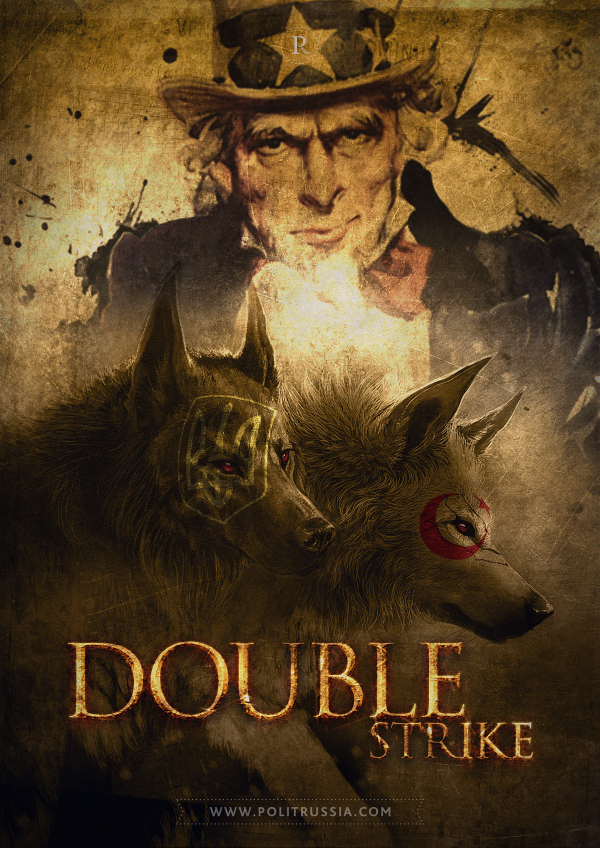

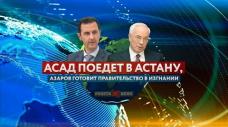
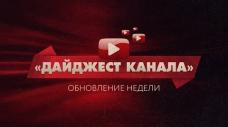
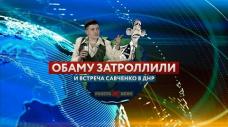
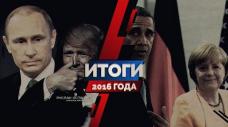
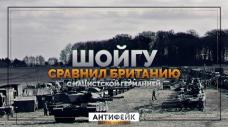

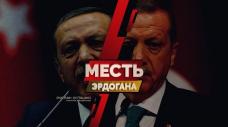

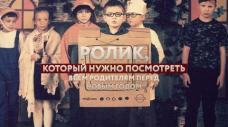
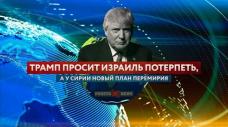










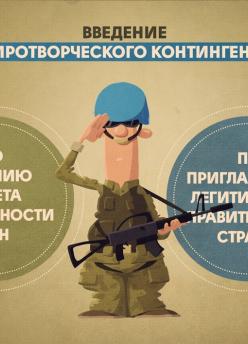

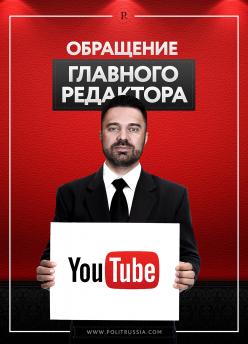

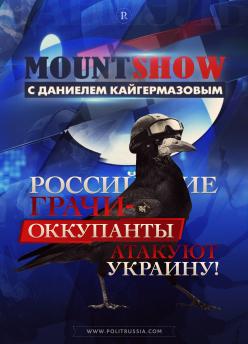

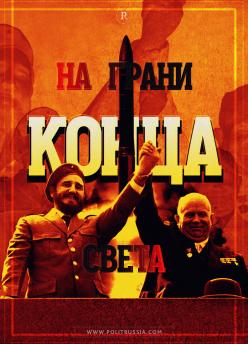
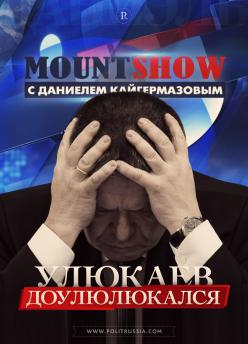
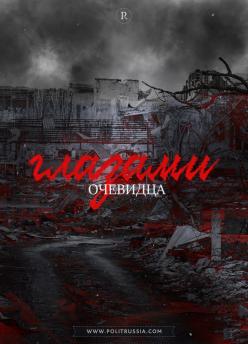
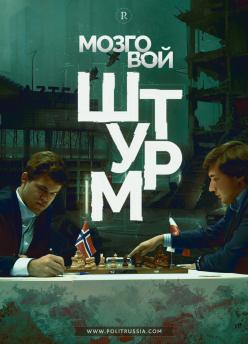

 259,677
259,677 
 1983
1983 


 812
812 



